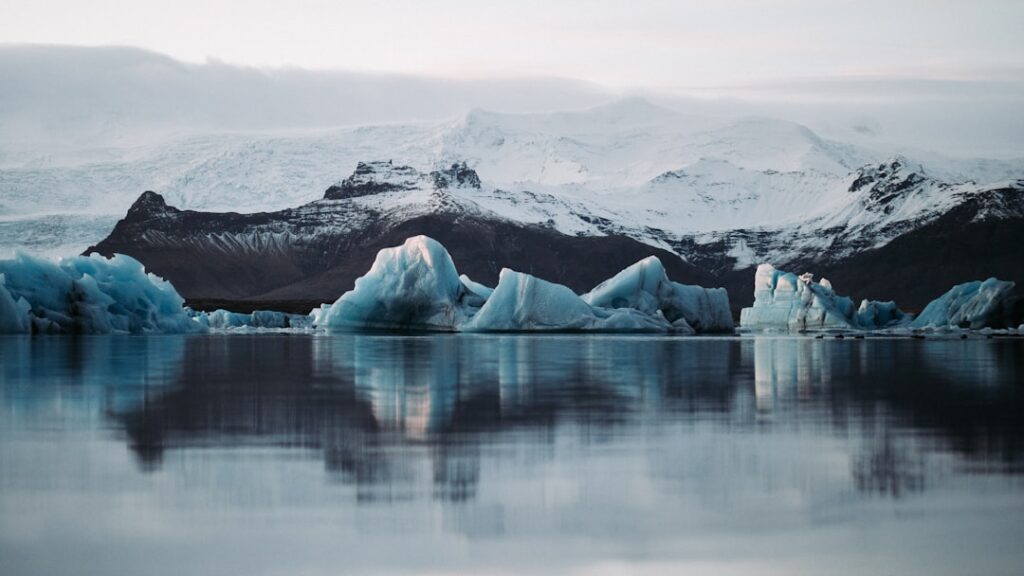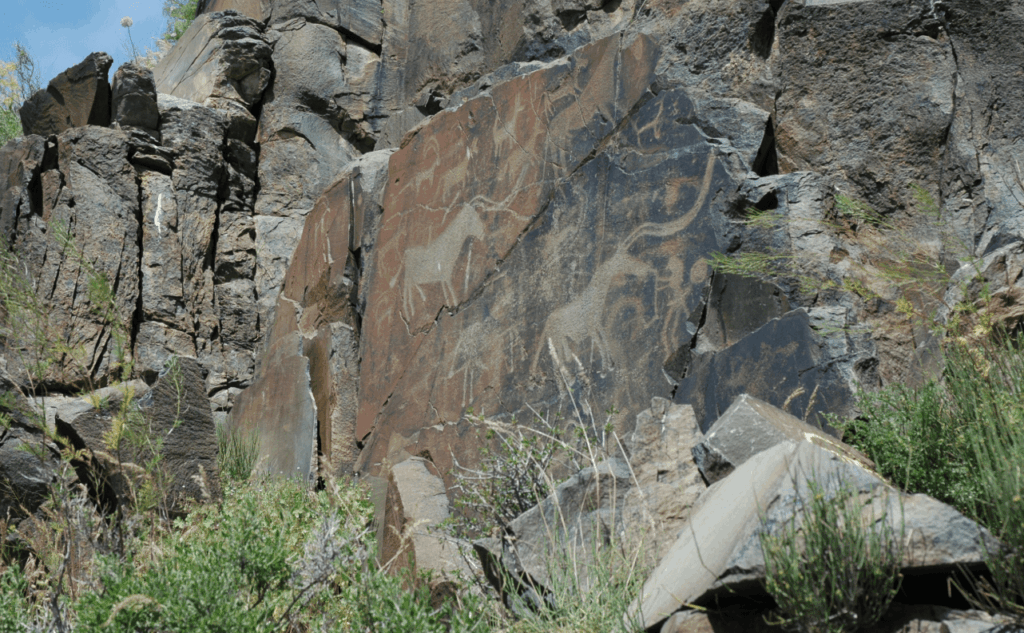The mammoth, a distant relative of the modern elephant, roamed the Earth during the Pleistocene epoch, which lasted from about 2.6 million years ago to 11,700 years ago. These majestic creatures were well adapted to the cold, harsh environments of the Ice Age, with their long, shaggy hair and thick layers of fat to keep them warm. They were widespread across North America, Europe, Asia, and Africa, and their populations thrived for thousands of years. However, as the climate began to warm at the end of the Pleistocene epoch, the mammoth’s habitat started to shrink, and they struggled to adapt to the changing conditions. Human hunting and environmental changes also played a significant role in their decline. By the end of the Ice Age, most mammoth populations had disappeared, leaving only a few isolated groups on remote islands in the Arctic. Eventually, these last remaining mammoths also died out, marking the end of an era for these magnificent creatures.
The rise and fall of the mammoth is a poignant reminder of the delicate balance between species and their environments. As the Earth’s climate continues to change due to human activities, it is crucial to learn from the past and take steps to protect the diverse range of species that call our planet home. The story of the mammoth serves as a cautionary tale about the potential consequences of unchecked human impact on the natural world and the importance of conservation efforts to preserve Earth’s biodiversity for future generations.
Key Takeaways
- Mammoths were once widespread across the globe but eventually went extinct due to a combination of climate change and human hunting.
- Mammoths were large, shaggy, and had long, curved tusks, making them well-adapted to cold environments.
- Mammoths primarily fed on grasses and sedges and lived in a variety of habitats, including grasslands, tundra, and forests.
- The extinction of mammoths is believed to have been caused by a combination of climate change and overhunting by early humans.
- Mammoth fossils have been discovered in various parts of the world, providing valuable insights into their biology and behavior.
- Mammoths played a significant role in ancient cultures, with their bones and tusks being used for tools, art, and even dwellings.
- Advances in genetic technology have raised the possibility of cloning and de-extincting mammoths, although ethical and practical challenges remain.
The Physical Characteristics of the Mammoth
Mammoths were impressive creatures that stood at an average height of around 13 feet at the shoulder, making them slightly larger than modern-day elephants. They had long, curved tusks that could reach lengths of up to 16 feet in some species, which they used for digging in the snow for food, defending themselves from predators, and foraging for vegetation. Their thick, shaggy coats helped them stay warm in the frigid temperatures of the Ice Age, and their large ears helped regulate their body temperature by dissipating excess heat. Their distinctive humped backs and high-domed skulls set them apart from their modern elephant relatives.
Mammoths were well adapted to their cold environments, with a layer of fat beneath their skin providing insulation and energy reserves during times of scarcity. Their large size and impressive tusks made them formidable creatures, and they were able to thrive in a variety of habitats, from grassy plains to icy tundra. Despite their imposing appearance, mammoths were herbivores, feeding on a diet of grasses, shrubs, and other vegetation. Their physical characteristics were finely tuned to help them survive in the challenging conditions of the Ice Age, making them one of the most iconic and well-adapted species of their time.
The Diet and Habitat of the Mammoth
Mammoths were herbivores that primarily fed on grasses, sedges, and other low-lying vegetation. They used their long tusks and trunk to pull up plants from beneath the snow in winter and to reach high branches in summer. Their diet varied depending on their habitat, with some populations living in open grasslands and others in more wooded areas. They were well adapted to a range of environments, from the frozen tundra of Siberia to the temperate forests of Europe. Their ability to thrive in diverse habitats contributed to their widespread distribution across multiple continents during the Pleistocene epoch.
The mammoth’s habitat was characterized by cold temperatures and harsh conditions, with long winters and short summers. They were well adapted to these challenging environments, with their thick coats and layers of fat providing insulation against the cold. As herbivores, they played a crucial role in shaping their ecosystems by grazing on vegetation and helping to maintain open grasslands. Their presence also supported a diverse range of predators and scavengers that relied on mammoths as a food source. The decline of mammoth populations at the end of the Ice Age had far-reaching effects on their ecosystems, highlighting the interconnectedness of species within an environment.
The Extinction of the Mammoth
| Event | Date | Cause |
|---|---|---|
| Extinction of the Mammoth | Approximately 4,000 years ago | Climate change, overhunting by humans |
| Population decline | 10,000 years ago | Loss of habitat, competition with humans |
| Size | Up to 14 feet tall and 20,000 pounds | N/A |
The extinction of the mammoth is a complex and multifaceted event that was influenced by a combination of factors. Climate change played a significant role in their decline, as warming temperatures at the end of the Pleistocene epoch led to the loss of their preferred habitats and food sources. This forced mammoths to adapt to new environments or face extinction. Human hunting also had a major impact on mammoth populations, as early humans relied on them as a source of food, clothing, and tools. Overhunting by humans likely contributed to the rapid decline of mammoths in many regions.
In addition to climate change and human hunting, other factors such as disease and genetic isolation may have also played a role in the extinction of mammoths. As their populations became increasingly fragmented and isolated, they may have become more vulnerable to disease outbreaks and genetic disorders. The combination of these various factors ultimately led to the extinction of most mammoth populations by the end of the Ice Age. While a small population of mammoths persisted on remote islands in the Arctic for several thousand years after their mainland counterparts had disappeared, they too eventually succumbed to extinction due to a combination of environmental changes and human activities.
The Discovery of Mammoth Fossils
The discovery of mammoth fossils has provided valuable insights into the lives of these ancient creatures and their interactions with their environments. Mammoth fossils have been found on every continent except for Australia and Antarctica, with some of the most well-preserved specimens coming from Siberia’s permafrost. These frozen remains have provided researchers with an unprecedented opportunity to study mammoths in great detail, including their physical characteristics, diet, and behavior. In addition to frozen specimens, mammoth fossils have also been found in caves, bogs, and other sedimentary deposits around the world.
The study of mammoth fossils has revealed a wealth of information about these iconic creatures and their place in Earth’s history. By analyzing their bones, teeth, and other remains, scientists have been able to reconstruct their evolutionary history and understand how they adapted to changing environments over millions of years. Fossilized footprints and dung have also provided valuable clues about their behavior and interactions with other species. The discovery of mammoth fossils continues to be an ongoing area of research, with new findings shedding light on previously unknown aspects of their biology and ecology.
The Role of the Mammoth in Ancient Cultures

Mammoths have played a significant role in ancient cultures around the world for thousands of years. Early humans relied on mammoths as a vital source of food, using their meat for sustenance and their bones for tools and shelter. Mammoth ivory was highly prized for its durability and workability, making it a valuable material for crafting tools, ornaments, and artwork. Mammoths also featured prominently in ancient myths and legends, with many cultures associating them with strength, power, and resilience.
The cultural significance of mammoths is evident in the numerous depictions of these creatures in ancient art and artifacts. Cave paintings in Europe and Asia often feature images of mammoths alongside other animals such as horses, bison, and deer. These artistic representations provide valuable insights into how ancient peoples viewed mammoths and their place in their societies. The legacy of mammoths continues to be celebrated in modern times through museums, art exhibitions, and cultural events that showcase their importance in shaping human history.
The Potential for Mammoth Cloning and De-extinction
Advances in genetic technology have raised the possibility of cloning mammoths and bringing them back from extinction through a process known as de-extinction. Scientists have been able to extract DNA from well-preserved mammoth remains found in permafrost and use it to sequence their genome. This has led to discussions about the feasibility and ethical implications of resurrecting mammoths using modern elephant relatives as surrogate mothers.
While the idea of bringing back extinct species like the mammoth is intriguing, it also raises numerous ethical questions about the potential consequences for existing ecosystems and conservation efforts. Some researchers argue that de-extinction could divert resources away from protecting endangered species that are currently facing extinction due to human activities. Others caution that reintroducing mammoths into modern environments could have unforeseen ecological impacts that may disrupt existing ecosystems.
Despite these concerns, research into mammoth cloning and de-extinction continues to be an active area of study, with ongoing efforts to better understand the genetic makeup of these ancient creatures and explore potential avenues for bringing them back from extinction. Whether or not mammoths will one day roam the Earth again remains uncertain, but their legacy as one of Earth’s most iconic Ice Age creatures continues to captivate our imagination and inspire scientific inquiry into our planet’s rich natural history.
Sure, here’s a paragraph with a mention of a related article to mamut:
“Are you fascinated by the prehistoric world? If so, you’ll love learning about the recent discovery of a well-preserved mamut in Siberia. This incredible find has shed new light on the life of these ancient creatures. If you want to delve deeper into the world of mammoths, check out this fascinating article on popicat.com that explores the significance of mammoths in human history and their potential role in shaping our understanding of the past.”
FAQs
What is a mamut?
A mamut, also known as a mammoth, is an extinct species of elephant that lived during the Pleistocene epoch. They were large, hairy mammals with long, curved tusks and lived in cold, grassy plains.
When did mamuts live?
Mamuts lived during the Pleistocene epoch, which lasted from about 2.6 million years ago to 11,700 years ago. They went extinct at the end of the Pleistocene.
Where did mamuts live?
Mamuts lived in various parts of the world, including North America, Europe, Asia, and Africa. They preferred cold, grassy plains and tundra environments.
What did mamuts eat?
Mamuts were herbivores and primarily ate grasses, shrubs, and other plant material. They used their long tusks and trunk to gather and consume their food.
How did mamuts go extinct?
The exact cause of mamut extinction is still debated among scientists, but it is believed that a combination of climate change, human hunting, and possibly disease contributed to their extinction at the end of the Pleistocene epoch.








